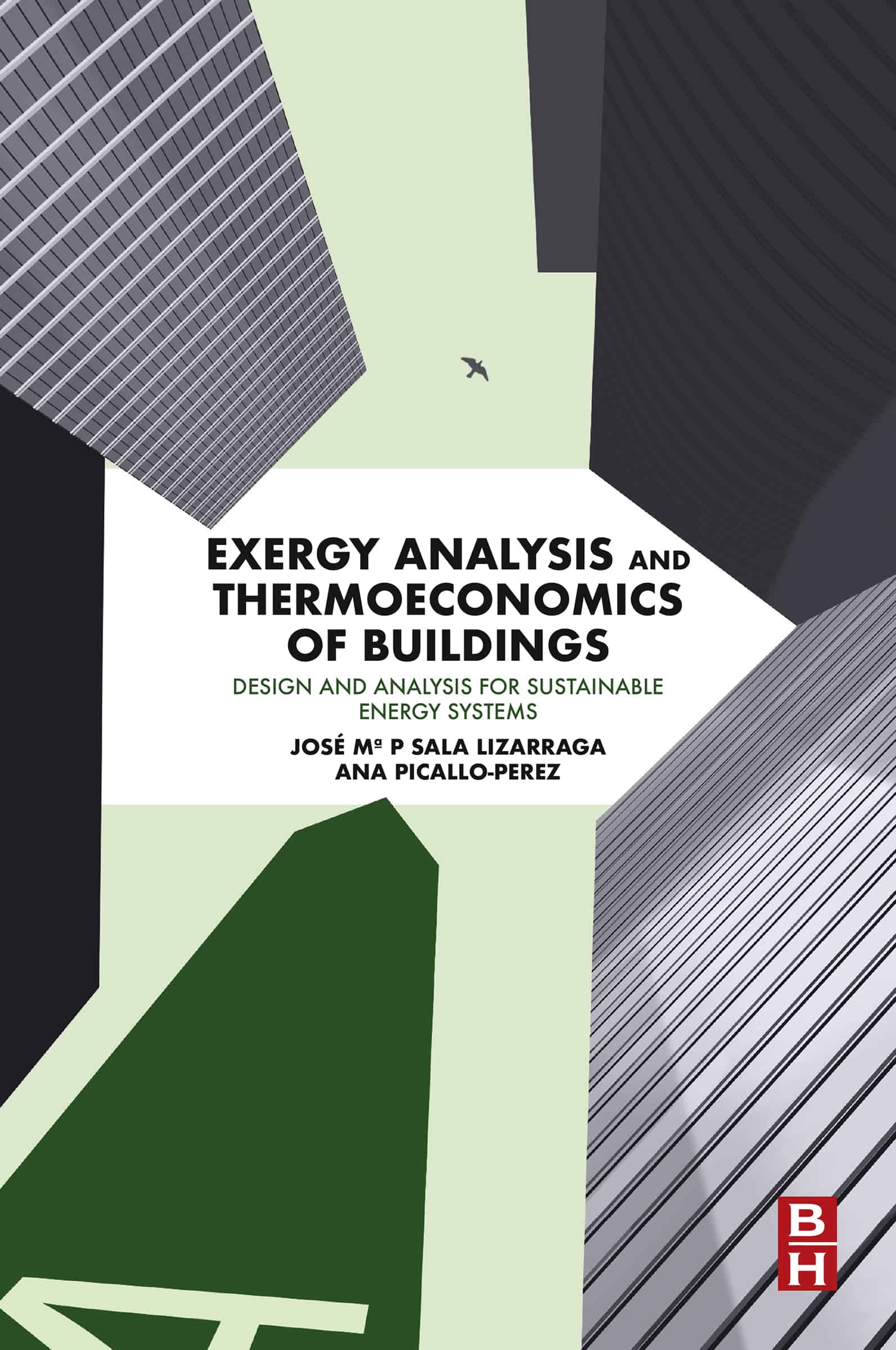Measuring exergy losses in the energy supply system of buildings shows the potential for energy improvement, which cannot be exposed using conventional energy analysis. Thermoeconomics integrates economic and thermodynamic analysis by implementing the concept of cost (an economic concept) to exergy, as exergy is a thermodynamic property suitable for this purpose, in that it links the quantity of energy with its quality factor.
Exergy Analysis and Thermoeconomics of Buildings (PDF) applies exergy analysis methods and thermoeconomics to the built environment. The methods of heat transfer throughout the envelope of buildings are evaluated from an exergy perspective and then to the building thermal installations, considering the different components, like condensing boilers, micro-cogeneration plants, absorption refrigerators, etc., including solar installations and lastly the thermal facilities as a whole.
A comprehensive analysis of the cost formation process is presented, which has its physical roots securely planted in the second law of thermodynamics. The fundamental principles and the rules of cost allocation, in monetary units (exergoeconomic cost), in energy units (exergy cost), and in CO2 emissions (exergoenvironmental cost), centered on the so-called Exergy Cost Theory are presented and applied to thermal installations of buildings.
Rigorous and clear in its exposition Exergy Analysis and Thermoeconomics of Buildings: Design and Analysis for Sustainable Energy Systems discusses exergy analysis and thermoeconomics and the part they could play in the analysis and design of building components, either the envelope or the thermal facilities, along with the diagnosis of thermal installations. This ebook moves progressively from introducing the basic concepts to applying them.
Exergy Analysis and Thermoeconomics of Buildings offers examples of specific cases throughout this ebook. These cases include real data so that the results gained are useful to interpret the inefficiencies and losses that truly happen in actual installations; hence, the assessment of their effects motivates the manner to improve efficiency.
- Assists readers determine the operational costs of heating and cooling building systems
- Discusses the direct application of exergy analysis concepts, including examples of DHW, buildings with typical heating, and air conditioning installations
- Implements exergy analysis methods for the installation of building thermal facilities equipment components, including pipes, valves, heat exchangers, boilers, and heat pumps
- Includes exergy analysis methods that are dedicated to absorption refrigerators, basic air conditioning processes, adsorption cooling systems, solar systems, ventilation systems, and either thermal and PV
NOTE: The product only includes the Exergy Analysis and Thermoeconomics of Buildings in PDF. No access codes are included.






Reviews
There are no reviews yet.